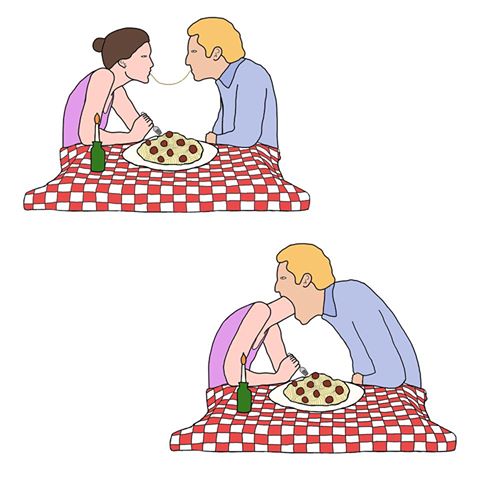Weekly post that addresses student’s exploration of your ILC learning objectives, activities and outcomes; specifically a weekly post that explores answers to the questions in the Learning Objectives.
Week 2
Exploration has been the theme of the first few weeks. As first class excitement fades into new academic quarter realities I have been reviewing as much literature as I can stand to better understand the direction I might be heading this program. I spent a noticeable chunk of time this week brainstorming, scrolling through texts with the reference librarian at the library, calling up people from old classes to track down book titles, and sifting through various texts to find relevant chapters. I stumbled upon Creating Sustainable Community Programs: Examples of Collaborative Public Administration by Mark Daniels, and found Olympia, Washington as one of the case examples for community program resilience. I explored Science Direct and found a Rights-Based approach to Food Insecurity in the United States, Governing Networks in the Hollow State, and Governing the Hollow State. I had gathered a large collection of texts, some of which were referenced in Racial Indigestion, others were addressing detailed subtopics such as Lawrence Lessig’s Republic, Lost: How Money Corrupts Congress – and a Plan to Stop it that relate to concepts discussed in class. As a student completing an ILC for the first time, I spent more time than usual in academic advising working with Tyrone and Eric to brainstorm learning objectives, refine them to articulate the exact notion I am pursuing, and to figure out which texts can most efficiently support my learning objectives without narrowing my focus and missing out on accidental discovery.
Concepts from Reading – This week’s reflection on reading will be brief due to the lack of independent texts read. In these sections, I will try and describe thoughts that were not presented in weekly seminar assignments, rather the supplementary thoughts that lead to that thought. Before starting to read Racial Indigestion, the relevance of the mouth being the location for voice, laughter, singing, kissing, smiling, and eating and what that psychological consequences can be when that epicenter for expression is suppressed. Due to this more delicate, newer understanding of the representation of voice stemming from the mouth, I noticed similarities between the people’s representation in our republic government state in comparison to oral deprivation from lack of fresh, non-pesticide sprayed food available in several counties in the United States. As the elected officials of the republic have shifted from being representative of the people to being representative of competing codependency of lobbyist wealth, the lack of representative voice for people without wealth shows the shifted dependency and the commodification of our voice, food, and shared interest.
Week 3
After outlining the basic fundamentals of the desired learning objectives I had to synthesize concepts to concisely ask the question: What interdisciplinary symbolism of eating food can the student relate to the concept of sharing the experiencing to promote social cohesion? By asking this question, I seek to better understand the multidisciplinary systems that affect our ability to promote social cohesion to sustain the shared natural environment. Another learning objective was developed this week: How has racism and prejudice in the U.S. been used as a tool to divide members of the working class? This learning objective questions the historical outline of our socio-political state to better understand contemporary ethics in the United States to identify issues that have repeatedly plagued our social sphere. The second learning objective mentioned took several hours to refine and prepare for because of its ambiguous scale and the extensive literature available. After spending a few hours at the library reading supplementary texts and working with the reference librarian I realized I knew enough to start focusing on individual texts. I discovered the texts Neurogastronomy: How the Brain Creates Flavor and Why It Matters, The Taste Culture Reader: Experiencing Food and Drink, and The Good Food Revolution: Growing Healthy Food, People, and Communities to enhance those two learning goals. I was fortunate enough to talk with Gail O’Sullivan on the phone before my meeting with Sarah this week to establish an internship at Fertile Grounds. The community-building bed and breakfast site has been hosting a volunteer run garden for over 15 years and they are seeking to turn into a legal community garden collective. After finding a late minute internship, I had to quickly write it into my contract as my final learning objective: What are the processes of legally certifying a garden into a public-access community space?
Activities
I had the opportunity to watch Seeds: The Untold Story at Capitol Theater in Olympia. The movie outlined a very aesthetic presentation of the environmental justice issues of seeds and how genetically modified seeds, in combination with their reckless distributors, is threatening the seed security of the globe. I also had the opportunity to go to the Women’s March in Seattle and be apart of the largest protest nationwide in U.S. history. This march lined up with assigned text from class and the experience to Seattle was insightful.
Concepts from Reading
A lot of hours were spent this week opening books and going through their table of contents to potentially discover useful texts. Near the end of my literary review for this week I discovered how frequently authors will suggest texts in the introduction of their book and used this resource to discover enough texts to read for this quarter and weeks to come. This week the assigned texts were discussing the place of a woman in the American house around a century ago. The author mentions the vernacular shift between “kitchen talk” and “jabber” after revealing the cook has to learn the palette (mind) of the household. The author discusses the draining of dysfunctional emotional turmoil of the house down the sink and how various non-white, non-white male bodies have worked this position. The African-American cook, the Irish cook, the Mexican cook, and when the white middle class began losing the capacity to hire help, the woman was subject to this position. I couldn’t help but notice the historical outline of marginalized groups of people unified under the voice of the white woman at the largest nationwide march in U.S. history.
Internship
I had my first meeting with Gail and two other interns, Haylie and Rob, at Fertile Grounds on Friday. I was caught up to speed on the current state of political affairs at Fertile Grounds and how they are looking to solidify themselves because their lease is up next August. We reviewed responses to 20 questions from the board of advisors and integrated those responses into a rough draft contractual agreement to abide by Fertile Grounds policies while being apart of the collective. We developed an idea for a pedestrian food corridor for grazing passersby that’s located on the lots near the road and sidewalk. This experience was extremely helpful in beginning to understand the subtleties of group organization.
Week 4
This week marks the beginning of the learning contract. Now that the curriculum is somewhat solidified I have begun to hunt down the required texts. Due to what was readily available I read the first two chapters of An Indigenous People’s History of the U.S. and was surprised by the timely overlap between course material as I will explain in concepts learned from this week’s reading. I also read sections from The Sharing Solution: How to Save Money, Simplify Your Life & Build Community, “Enhancing community capacity: Roles of perceived bonding and bridging social capital and public relations in community building”, “Who do you think you are? An examination of how systems thinking can help social marketing support new identities and more sustainable living patterns”, and “At the Garden Gate: Community Building Through Food: Revising the Critique of “Food, Folk and Fun” in multicultural education” in order to better understand social marketing in the context of promoting group engagement and growth.
This week I realized that I would need to reduce the length of my response papers for individual study because I need to save time for annotating bibliographies and uploading content to the website.
Internship
This week’s internship involvement increased from last weeks. We returned to meet and discuss the Fertile Grounds drafted contract and policy documents in order to present them to the board of directors for further edits. After agreeing there is only so much we can change without feedback from the board, we pruned kiwi vines and sifted out fine particulates from the compost for soil. After leaving Fertile Grounds, I read scientifically reviewed articles to better understand group dynamics and how to write a proposal that acknowledges the gray area of being in a collective, yet still provides rules succinct enough to follow. It was the first board meeting I had attended, and at the end I was asked if I had any thoughts to say and concluded with my findings from the article. I explained how the studies show the quality of individual engagement with a group depends on their moral centrality. This term describes the importance of morals within a person’s concept of identity. Providing a space, in which an individual can engage in, allows for a revised or new concept of self-identity in an individual which supports an individual’s personal growth more than appealing to materialistic value. If Fertile Grounds were to highlight their moral values in a way that implied personal attachment, it could help limit differences in an individual’s moral centrality by agreeing to abide by the moral principles. The reason for my promotion of a moral outline is that overbearing rules deters people from joining a cooperative in which resources and distribution of goods are relative and this type of sharing and cooperation requires the shared common ground of intrinsic human values.
Concepts from Reading
In the first chapter of An Indigenous People’s History of the U.S., Roxanne Dunbar-Ortiz discusses the trade network of the “peoples of the corn” as described on page 30. These Indigenous nations were “city-states or towns comprised of independent, self-governing people that held supreme authority over internal affairs and dealt with other peoples on equal footing.”. Some Indigenous cultures that migrated from central Mexico into southeastern U.S. around the 1850s believed every kernel of corn represents a deceased member of the tribe. The association of corn to the identity of a member of that culture encouraged engagement with a larger system of other similar cultures during large trades. According to the article, “Who do you think you are? An examination of how systems thinking can help social marketing support new identities and more sustainable living patterns” the goal of a group promoting social cohesion should be to create solutions that fit with consumer identity. The text also discusses that motivations are rational – preferring to act within the comfort of their own value system. In the article, “Enhancing community capacity: Roles of perceived bonding and bridging social capital and public relations in community building” the authors discuss the community’s capacity is considered in terms of the members’ “…perceived capability to resolve their problems and accomplish their shared goals based on a desire to collaborate and construct a positive environment for community building.”. A system that supports individual engagement by creating a sense of self that others can develop a shared value system under relies upon a fairly similar moral centrality amongst members so the perceived capability and desire to collaborate and construct a positive environment is not in question. In the text, The Sharing Solution: How to Save Money, Simplify Your Life & Build Community the author discusses methods to come together and celebrate a shared interest. The book states that a group should be happily comfortable and known to each other before community discussion, sharing, and/or trading occurs.
Week 5
This week I uploaded and documented notes from my journal over the previous three weeks work. The first few weeks were spent understanding and designing a learning contract and because of that I am still finding a rhythm with uploading content and the distribution of ideas into each assignment. This week I only read Chapters 3 and 4 for An Indigenous People’s History of the U.S. and Chapter 5 from A People’s History of the U.S. for my learning contract. These readings coincided with Chapter 3 of Racial Indigestion, Chapter 5 of The Financial Life of Food, and select pages from The Winona LaDuke Chronicles. My understanding of how racism and prejudice in the U.S. was used as a tool to divide the working class has drastically increased this week. I have learned the unnatural violence during that time was guided away from the harsh ruling class to non-white bodies through the divisive inhumane tool of racism. The emotional divulgence of the other can be disrupted when the subject ingests their own “stickiness” as described by Tompkins. I hope to further explore the concept of feeding off of other people’s positive energy in the context of promoting social cohesion rather than dismantling it.
Internship & Activities
I attended a weekly meeting at Fertile Ground to discuss the preparation of a potluck to promote awareness and advertise for the plots and relocated a few kohlrabi plants in order to replant, prune, and water an apple tree. I brainstormed a way to incorporate the moral values of Fertile Grounds and what they provide as an organization to see which principles could not be categorized. The principles that remained were integrity, organization and tidiness, and non-violent communication. After reading the scientific articles last week, I found principles that an individual is responsible for when they personally engage into a system. The larger moral framework (the rest of the principles that could get paired off into functions of Fertile Grounds) can be categorized as such and potentially presented in a way that aids the engagement of the isolated three principles.
Concepts from Reading
In the text An Indigenous People’s History of the U.S., Dunbar-Ortiz describes how modern nation states develop a rationalized origin story in order to promote an individual’s loyal and patriotic attachment to the state. The moment that citizens of one modern state look at another culture as “primitive”, is the moment that they identify their origin myths to be not grounded in reality.
The rationalized origin story of this country attempts to cover up a foundation of commodifying inhumane oppression. In A People’s History of the United States, the author writes of the startling number of colonists that were sent over to add numbers to the white middle class for security because of violent misdirected anger from Britain’s overpowering rule were convicts, flushed from Britain. Dunbar-Ortiz states that according to John Grenier’s work The First Way of War, violence was already present before the war and racism did not incite it, but was used to mask the unnatural violence as a tool to release the desire to kill. The masking of this desire evolved into an emotional and spiritual feeding upon all non-white bodies. In Racial Indigestion, Tompkins writes there is a limit to how much the white body can ingest the black subject, when the black body inhabits its own stickiness, the white consumer is upset by the black subject trying to leave the stickiness, upsetting the okayness of their treat.
In Hawthorne’s The House of Seven Gables, the limited conscious awareness of “the little cannibal” represents subconscious desire to eat the other, and not until Hawthorne introduces the boy into the marketplace by having him ask a poor Hepzibah for another Jim Crow cookie with his mouth stained from the previous devouring, does the coin “stain” her hand. The coin marks her participation in the market of the cannibalistic feast of the other. As the boy ingests the cookie and unconsciously digests the other, she consciously digests the black body. Hawthorne’s attention to children in the marketplace through the perspective of a woman represents maternal caretaking emotion digesting side by side with dehumanizing oppression in an empty stomach.






